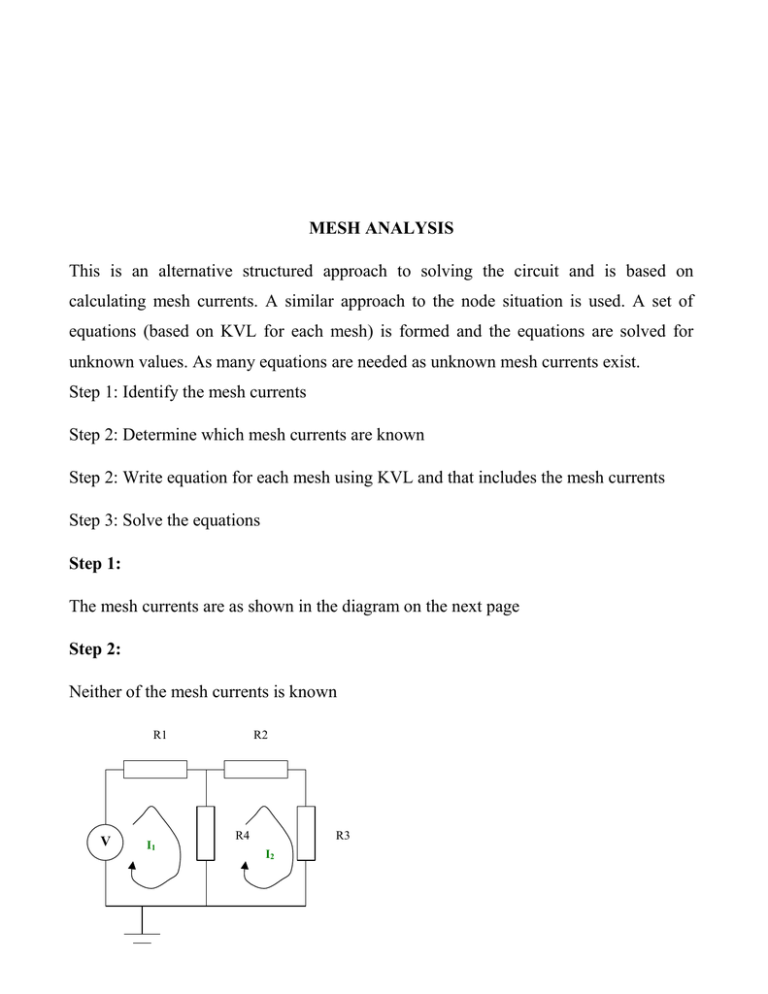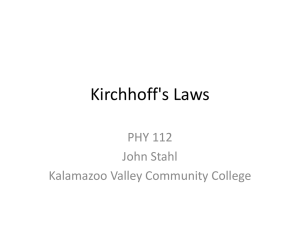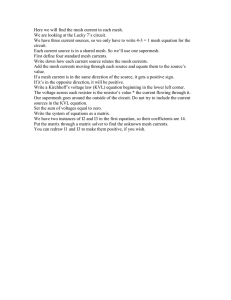MESH ANALYSIS This is an alternative structured approach to
advertisement

MESH ANALYSIS This is an alternative structured approach to solving the circuit and is based on calculating mesh currents. A similar approach to the node situation is used. A set of equations (based on KVL for each mesh) is formed and the equations are solved for unknown values. As many equations are needed as unknown mesh currents exist. Step 1: Identify the mesh currents Step 2: Determine which mesh currents are known Step 2: Write equation for each mesh using KVL and that includes the mesh currents Step 3: Solve the equations Step 1: The mesh currents are as shown in the diagram on the next page Step 2: Neither of the mesh currents is known R1 V I1 R2 R4 R3 I2 Step 3: KVL can be applied to the left hand side loop. This states the voltages around the loop sum to zero. When writing down the voltages across each resistor Ohm’s law is used. The currents used in the equations are the mesh currents. I1R1 + (I1 - I2) R4 - V = 0 KVL can be applied to the right hand side loop. This states the voltages around the loop sum to zero. When writing down the voltages across each resistor Ohm’s law is used. The currents used in the equations are the mesh currents. I2R2 + I2R3 + (I2 - I1) R4 = 0 Step 4: Solving the equations we get I1 V I2 V R1 R2 R2 R3 R4 R1 R3 R1 R4 R2 R4 R3 R4 R1 R2 R4 R1 R4 R3 R4 R1 R3 R2 R4 The individual branch currents can be obtained from the these mesh currents and the node voltages can also be calculated using this information. For example: VC I 2 R3 V R1 R2 R1 R3 R3 R4 R1 R4 R2 R4 R3 R4 Source : http://nprcet.org/e%20content/first/ct.pdf




